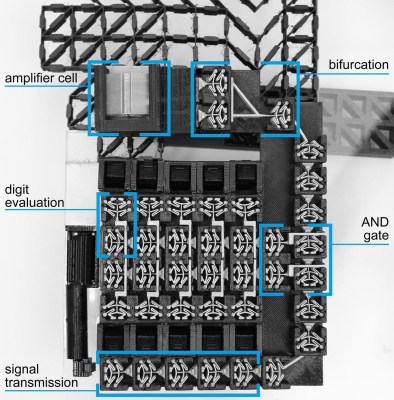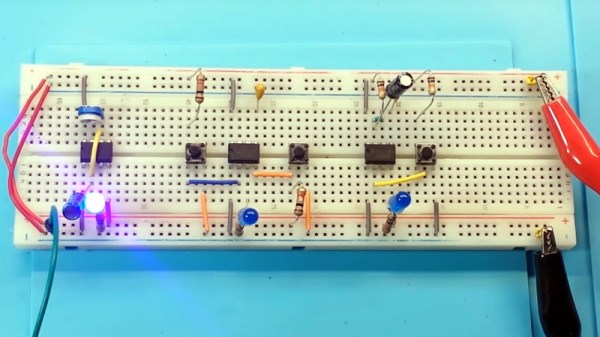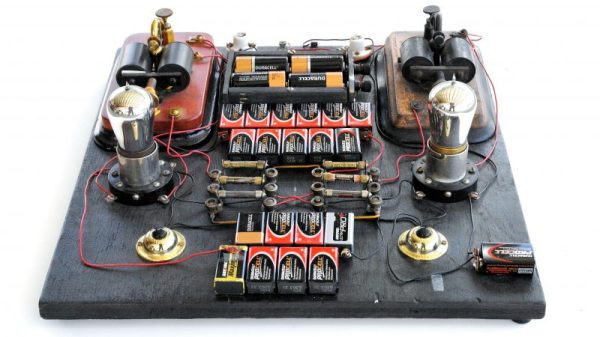3D printers are great for creating static objects, but if you’re clever, it’s possible to print functional devices. If you’re absolutely brilliant you can go far beyond that, which is the case here. This door handle with a key-code lock does it all with 3D printing using mechanism designs that look like alien technology. This is just one application of a much more interesting mechanical digital logic they’re developing (PDF).

Working from the [Hasso-Plattner-Institut], the research team is focusing on metamaterials as mechanisms in and of themselves. The crux of this lock is a series of bistable springs that — if the correct code is entered — will trigger in series to unlock the door. The project builds on the grid of shearing cells seen in the door handle we featured last year. It happens quickly in the video, but the intricate cascade of the handle unlocking is a treat to witness.
It’s a fascinating show of mechanical design. The common elements of digital electronics are all present: set or unset bits, logic gates, propagation issues, the whole works. But there are added challenges in this system, like the need for special cells that can turn the logic chain by 90 degrees and split the signal into more than one part.
This signal splitting is seen in the upper right (bifurcation) and leads into what is in effect an amplifier. The locking bolt must be moved twice the distance of a normal cell, so a dual-cell input is necessary to offset the loss of force from the incoming smaller cells. Cognitively we understand this, but we’re still trying to gain an intuitive sense of the amplifer mechanism.
One thing’s for sure, the overall concept is far cooler than this admittedly awesome door lock mechanism. The paper is worth your time for a deep dive. It mentions their design editor software. You can play with it online but we don’t think it’s been updated to include the new logic cells yet.
Continue reading “3D Printed Key-Code Is Plastic Digital Logic” →















